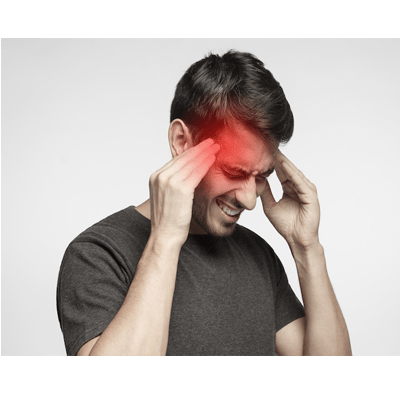Headache/Migraine
Migraines are an exceptionally normal condition that the vast majority will encounter ordinarily during their lives. The principal indication of a migraine is an aggravation in your mind or face. This can be pounding, consistent, sharp or dull. An essential migraine is caused by overactivity of or issues with torment touchy constructions in your mind. An essential migraine isn’t a side effect of a fundamental infection.Compound action in your mind, the nerves or veins encompassing your skull, or the muscles of your head and neck (or a blend of these elements) can assume a part in essential migraines. Certain individuals may likewise convey qualities that make them bound to foster such cerebral pains. Consult with the Best doctor for Migraine Treatment in Purnia, Bihar
Headaches are a common health problem. When severe, they can affect quality of life and lessen productivity in school and in the
workplace. Headaches are often treatable with medications and/or lifestyle changes. Your UHS clinician is available to evaluate your
symptoms and help you find strategies for headache relief.
Tension and migraine headaches are the two most common types. These two types often overlap in their symptoms and their
response to medication. Modes of relief and triggering factors vary from person to person.
Typical Tension headache symptoms may include:
• Dull, steady pain with a tight band-like or vise-like gripping pressure
• Pain intensity is mild compared to migraine
• Pain may be felt in the forehead, temples, back of neck or throughout the head
• Muscles in the back of the upper neck may feel knotted and tender to the touch
• Symptoms usually subside within a few hours
Tension headaches are often associated with stress, fatigue, or muscle strain. Activities that put the head and neck in a tense, prolonged posture
(i.e. reading, keyboarding, gum chewing, or teeth grinding) can trigger tension headaches.
Migraine characteristics include:
• Pain typically on one side of the head
• Pain has a pulsating or throbbing quality
• Moderate to intense pain affecting daily activity
• Nausea or vomiting
• Sensitivity to light and sound
• Attacks last 4 to 72 hours, sometimes longer
• Visual disturbances or aura (e.g. wavy lines, dots, flashing lights and blind spots or disruptions in smell, taste or touch) from 20-60 minutes
before the onset of a headache
• Exertion (e.g. climbing stairs or running) worsens the headache.
Migraine headaches are three times more common in women than in men. A family history of migraine is present in 70-80% of sufferers.
Many women experience migraines related to the hormonal changes of menstruation, oral contraceptives, pregnancy, post-partum, and
menopause. If headaches become more frequent and intense with oral contraceptive use, it is important to inform your clinician. In some
instances, a change in the type of oral contraceptive pill will lessen or alleviate the headaches. In other instances, the pill or hormone
treatment must be discontinued.
Over the counter or prescription medications are often useful in pain management of migraines. It is possible however, to worsen headaches with
frequent medication use. Talk with your clinician about all prescription, over-the-counter, or herbal products you are taking for headache treatment.
Your clinician will work with you to try to find the best strategy for headache relief and prevention.
Many people find headaches improve with relaxation and other self-care techniques. Rest in a darkened room, cool compresses, massage, and a nap are examples. Drink plenty of fluids to avoid dehydration. Meet Our Best Doctor for Headache in Purnia, Bihar


